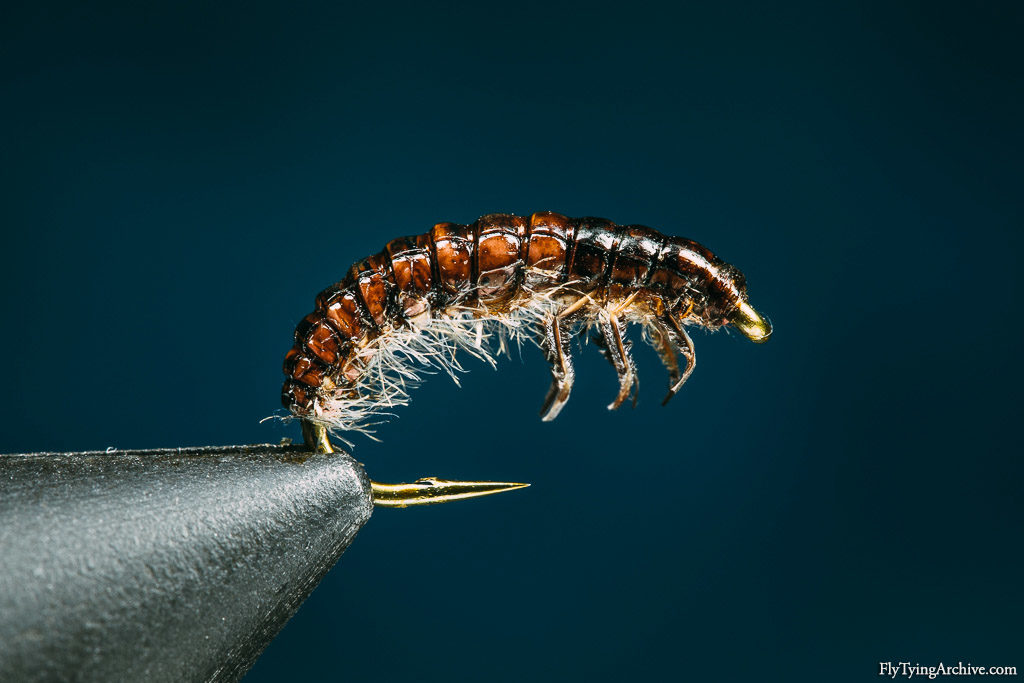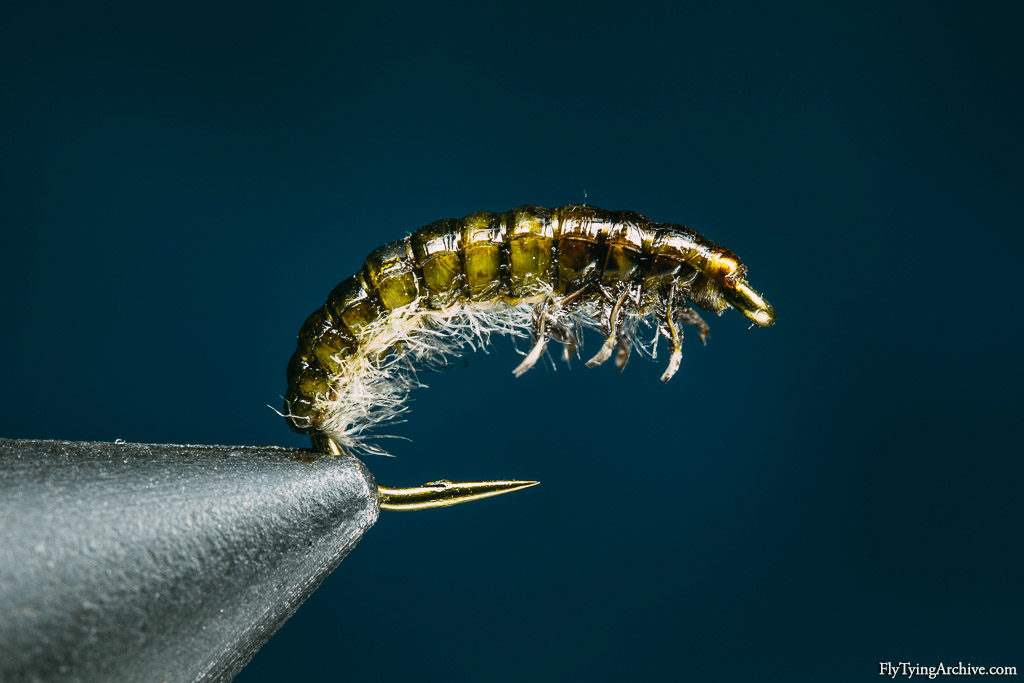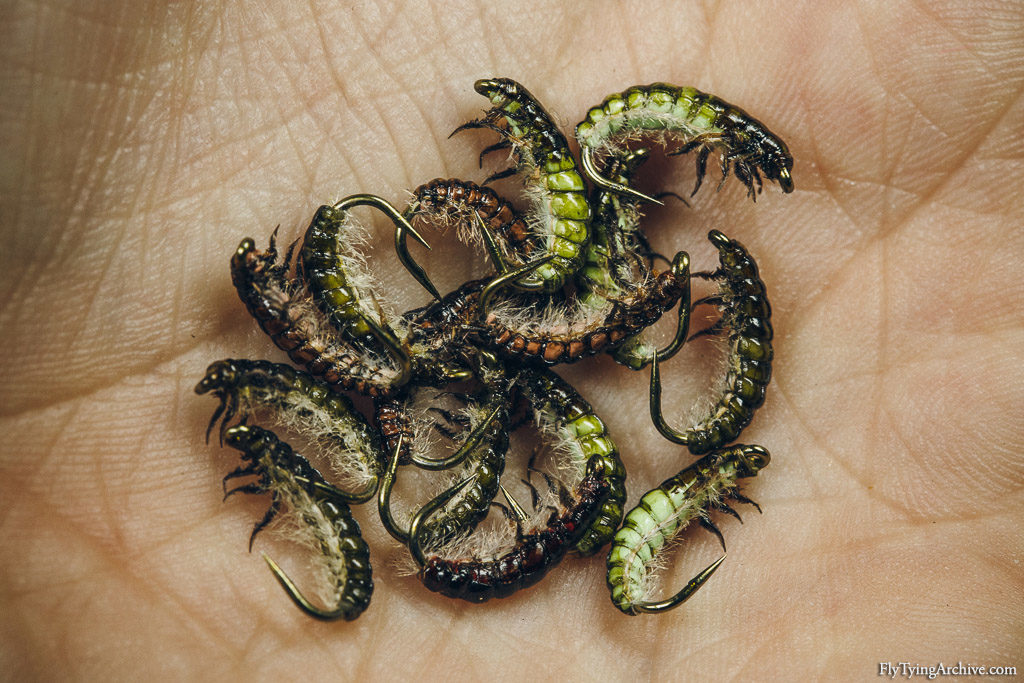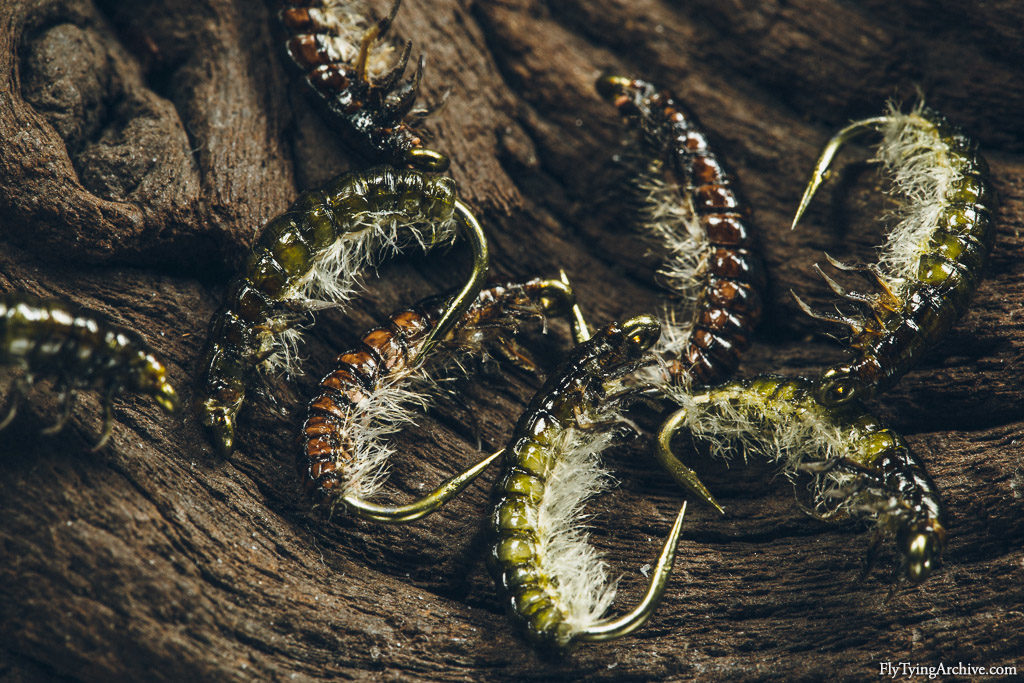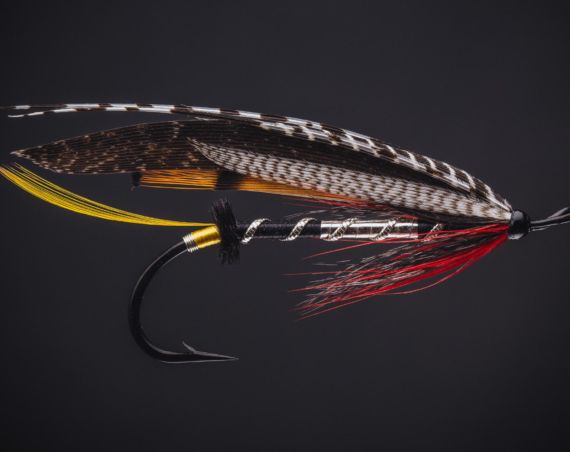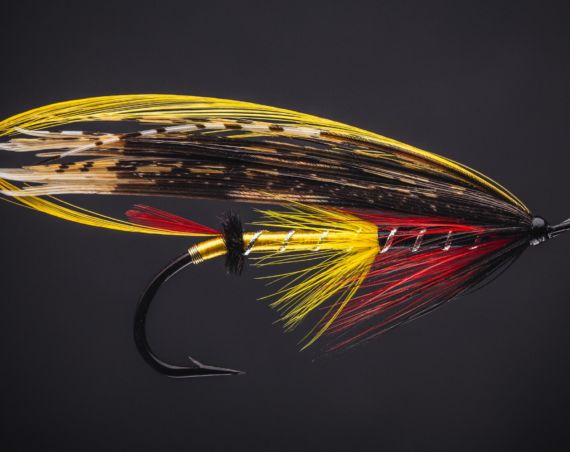Hydropsyche Larva
When I first laid my eyes on Oliver Edwards’ book Flytyers Masterclass my life changed. It was a real eyeopener to me on what could be achieved with fly tying and immediately changed my approach to tying trout flies. Oliver’s hydropsyche caddis larva especially draw my attention and it’s still one of my favorite patterns to tie and regularly at the end of my leader.
I’ve varied the original pattern to suit my tying better over the years. I usually leave the small philoplume out from the back or use something else for the tail. I also add a back of mottled Thin Skin for a bit of added realism, I think I saw Mikko Stenberg do it first and think it adds a nice touch to the pattern. I’ve also gone through many different materials and techniques for the gills but now have gone back close to the original method with a different material. I use two bleached and dyed tan peacock herls as they are shorter than Ostrich and add a bit of shine, I also leave a gap between the herls underneath the fly to position them a bit more realistically and to show the belly of the larvae.
I like to tie these on TMC 2457 hooks in size 10, 14 & 16 and three colors of each, brown, olive and a brighter green. The ones in the photos are #14 and that’s my favorite size to fish them. Many tie them larger than that but I’ve found the smaller ones to work better where I fish.
Hook: TMC 2457 #10-16 or similar heavy grub hook.
Weight: Adhesive lead tape or leadfree wire.
Rib: Roman Moser Power Silk, color to suit the pattern.
Back: Thin Skin, Mottled Oak – Natural or Olive
Gills: Two Peacock herls bleaches and dyed tan.
Body: Nymph Skin 3.5mm, Translucent or Caddis Green on the bright green pattern.
Legs: Golden Pheasant Tail fibers stripped from the stem, not cut.
Color: Use permanent markers to add color and add a thin layer or varnish when finished trying to avoid soaking the gills in varnish. This will make the color and fly in general more durable.
Tying techniques can be found in the book or Oliver’s Essential Skills DVD’s or from the many youtube videos people have posted about this fly.



